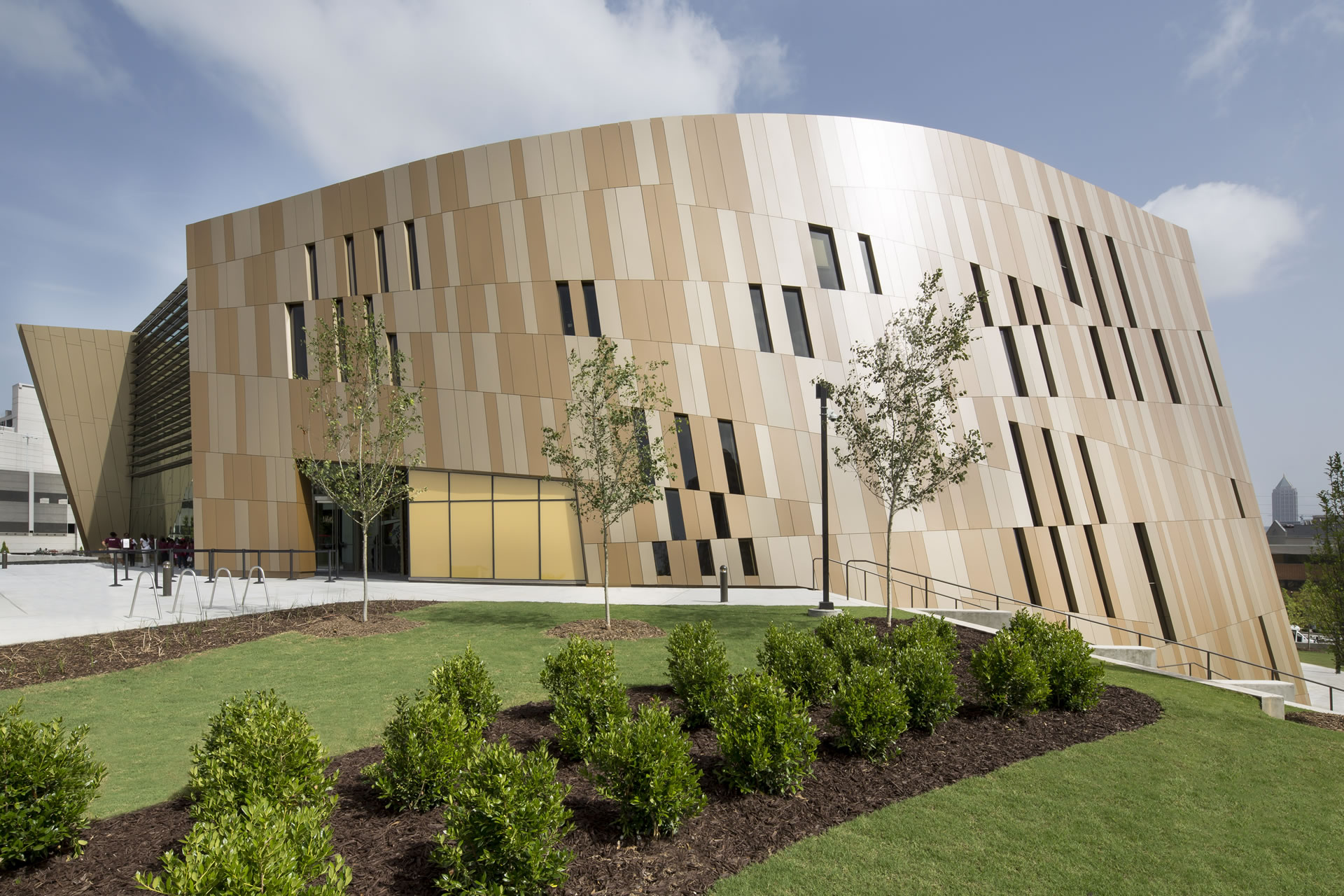Dedicated to the achievements of both the Civil Rights movement in the United States and the broader human rights movement worldwide, the National Center for Civil and Human Rights (NCCHR) in downtown Atlanta was designed by the Freelon Group with architect-of-record HOK to be a “living” center where visitors are immersed in an interactive storytelling experience in each exhibit. The museum’s two powerful exterior walls loosely resemble a pair of cupped hands and represent the center’s uplifting spirit of optimism and progress.
The surface of the façade is made up of Trespa Meteon panels, a high-pressure compact laminate used as a drained and back-ventilated façade. “Rain screens allow for the use of outboard insulation that can increase the overall R-value of the wall structure, allowing for a more energy-efficient building structure,” says Andrew Ashton, Trespa’s façade application specialist.
The decorative surface of the Trespa Meteon panels is a very dense, non-porous material that results from Trespa’s electron-beam-curing (EBC) process. The end product is a façade that is not only a distinctive, high-performing architectural feature, but one with a greater meaning: a symbol of the many individuals who make up movements for social progress.
A Breathable Façade
The rain-screen design uses cladding over the structural wall, creating an open-air cavity between the two. This allows the air current constantly rising from the bottom of the façade to dry out any moisture that could infiltrate beyond the façade panels.
Precision Fabricated
Trespa Meteon panels are supplied as an engineered system precision-fabricated with CNC equipment. The fabricator’s shop drawings identify every panel, and they come to the job site labeled to coincide with their exact location.
A Range of Hues
The multi-toned façade is symbolic of multiracial faces of the Civil Rights movement. Rotating the Trespa Meteon panels 90 or 180 degrees during installation created the illusion of numerous browns and tans (by the way the sunlight hits the panels), when in fact only two hues were used.

